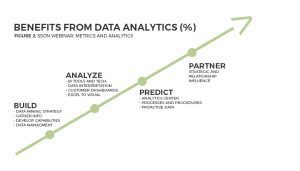“Information is a source of learning. But unless it is organized, processed, and available to the right people in a format for decision making it is a burden, not a benefit”
– William Pollard
The advances in technology together with the development of the internet have enabled free flow of information. But, the volume of information has been growing exponentially making data management increasingly challenging.
Traditionally, data was stored in massive relational database which required elaborated infrastructure in terms of hardware and software. The maintenance of data in this way was expansive, impractical and inefficient. Moreover, the information was available only to selective number of people. Moreover, with time the amount of stored data reached overwhelming levels and often managers were caught up into too much unstructured, almost useless information.
The main problem: Managers were no able to “see the forest for the trees.”
This is when data mining and data analysis become the new imperative for success in business. Implementing data analytics across the business processes meant:
- Cutting costs through economies of scale
- Improving the business decision-making process
- Increasing efficiency through optimization, harmonization and standardization
- Identifying problem areas for improvement
Figure 1 illustrates how these benefits and opportunities are perceived by companies.
What this means for the Shared Services and outsourcing (SSO) industry?
Although very beneficial, not every company necessarily has the skills and technology to move towards this new way of doing business. Fortunately, the Cloud technology makes it possible to share data with partners on remote locations. Today, SMEs lacking the resources can entrust Data Analytics to external partners with the right expertise. This opens up the opportunity for outsourcing companies to provide clients with higher-value added services. Simultaneously, it eliminates the need for heavy investments in hardware and software infrastructure. This way the clients are able to focus their financial and human resources on the core areas of the business while empowering their strategy with data insight derived from analytics.
I recently attended an online webinar from SSON where Mr. Arvindakshan, Head of operations at the Lufthansa Global Business Service, provided interesting model of the path that each outsourcing company goes through from being a simple service provider towards more of a partnership relation with their clients. In the very core of this journey is analytics (Figure 2).

The model moves from building the needed capabilities and strategy for incorporating analytics in the business. The second step is better visual presentation of the data through Business Intelligence tools and technology. Next, the analytics center is formed which can be either a shared service within the company or support center provided by an outsourcing partner. The key is to proactive data for predictive measuring. This way the client can perceive the opportunities and challenges on the market and react accordingly.
If the SS/outsourcing center continues to improve, in the end It will be able to provide strategic advice for the client. However, some might have security concerns due to the sensitivity of data. For that reason cyber security has emerged as another buzz word along data analytics. In following articles we will address this issue as well.
What do you think? Would you take the outsourcing journey in the field of analytics?